For Salmon and Trout (and many other species), I think cured salmon roe is the best bait you can use. Chum Salmon roe is my favorite to use because of the size of the eggs and skeins. This tip page walks through the entire process I use to cure and store my Salmon eggs.
YouTube video at the bottom with instructions—The steps below are shown in the video at the bottom of this page. In the video I use 3 different cures and outline my favorites with a finished product review. I’ve outlined these favorite cures and scent powders just below the video.
Salmon eggs make excellent bait for catching a variety of fish species. Their strong scent attracts fish and induces them to strike. While you can buy preserved salmon eggs at tackle shops learning how to preserve the eggs yourself lets you control the curing process and save money. With a few simple steps you can preserve salmon eggs at home to create high-quality bait that stays fresh in your freezer for months.
Obtaining the Eggs
The first step is acquiring salmon eggs. If you catch a female salmon in the fall, you can extract the loose skeins of eggs. Handle them gently to avoid bursting the eggs. Another option is to buy fresh salmon eggs from a fish market or tackle shop during salmon spawning season. Ensure the eggs look plump and are not discolored.
You can also purchase frozen salmon eggs out of season. Thaw them overnight in the refrigerator before curing. Frozen eggs work fine but fresh ones absorb cure better
Curing the Eggs
Curing preserves the eggs and adds scent to attract fish. While you can use salmon eggs right away, curing makes them more durable and improves their action in the water. The curing process firms up the eggs so they stay on the hook better too
A basic cure for salmon eggs contains just salt and borax. The borax helps keep the eggs from getting mushy. For 1 quart of eggs, mix together:
- 1⁄4 cup of salt
- 1⁄4 cup of borax
- 1 cup of water
Stir until fully dissolved. Add the salmon eggs and let soak 10 minutes, stirring occasionally. The eggs will firm up a bit. Drain off the excess cure liquid and rinse the eggs in fresh water. Allow them to drain thoroughly. Repeat the soaking and rinsing process two more times.
For added scent, you can include cured salmon egg juice or anise oil in the cure. Other popular additives are maple syrup or ProCure bait scents. Avoid over-scenting the eggs though, as too much scent can make fish drop the bait.
Freezing the Eggs
To extend their shelf life for fishing season, freeze the cured eggs. Take the following steps:
-
Place eggs in a single layer on a baking sheet. Freeze until solid, about 2 hours.
-
Transfer to zip-top bags or plastic containers. Squeeze out excess air before sealing.
-
Label bags with the type and date. Store frozen eggs at 0°F or below.
Proper freezing preserves the eggs’ texture and scent. Thaw frozen eggs overnight in the fridge before use. They will keep for up to a year frozen.
Making Salmon Egg Sacks
One popular way to fish cured eggs is in small mesh sacks called roe bags. These little bags allow you to easily attach the eggs to a hook or line. Here’s how to make DIY salmon egg sacks:
Materials
- Cured salmon eggs
- Plastic mesh or synthetic sack cloth
- Bait thread
- Small bait floats
Instructions
-
Cut mesh into 2 x 2 inch squares. Place 5-10 eggs in the center.
-
Gather up the corners enclosing the eggs. Pinch them together.
-
Wrap bait thread tightly around the top to form a sack. Tie it off.
-
Trim any excess mesh and add a few floats if desired.
-
The finished sacks are ready for hook rigging.
This method creates durable mini egg sacks that float in the current and hold up to strikes. Carry a variety of sack sizes to match bait to fish species.
Rigging the Eggs
When ready to fish, you’ll need to attach the cured eggs securely to your line. Here are two easy methods:
Egg Loop Knot
The egg loop knot rigs a single sack off the main line. It uses the line to create a slip loop that holds the bait. Follow these steps:
-
Thread line through hook eye and bend back parallel to hook.
-
Wrap line around hook shank 8-10 times towards bend.
-
Bring end back up through eye again.
-
Hold end against shank and wrap line around 8-10 more times.
-
Pull end to tighten wraps into loop knot.
-
Insert sack and tighten loop around its middle.
Salmon Egg Loop Harness
This harness rigs multiple sacks on short dropper loops off the main line.
-
Tie on a hook 1-3 feet up from a weight. Leave a long tag end.
-
Use tag end to tie small loop knots every 6-8 inches up the line.
-
Snell a tiny hook on each loop. Hook a sack on each snelled hook.
The dropper loops allow the eggs to drift naturally in the current above the weight.
Getting the Most From Your Bait
Now that you’ve learned how to preserve and rig salmon eggs, you’ll want to use them to their full potential. Keep these tips in mind:
-
Check your rigs regularly for damaged sacks and replace as needed.
-
Bring extra cured eggs and sacks in case you lose some to strikes.
-
Don’t leave eggs sitting in water too long or they become waterlogged.
-
Keep hands clean of other scents when baiting up with eggs.
-
Match sack size to fish size. Use larger sacks for big trout, smaller ones for panfish.
-
Try tipping egg sacks with a nightcrawler or small minnow for extra attraction.
Taking a little time to properly preserve your salmon eggs results in high-quality bait that catches fish after fish all season long. Following the right freezing, curing, and rigging methods will help you get the most out of this fabulous fish-catching bait.

Instructional Video – How to Cure Salmon Eggs



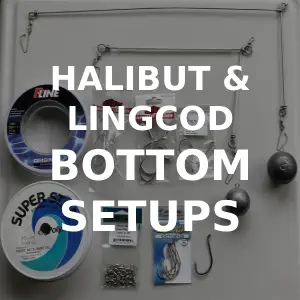
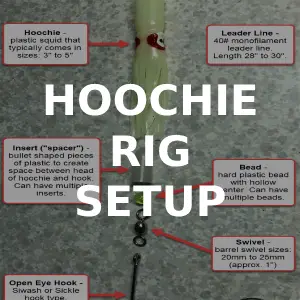
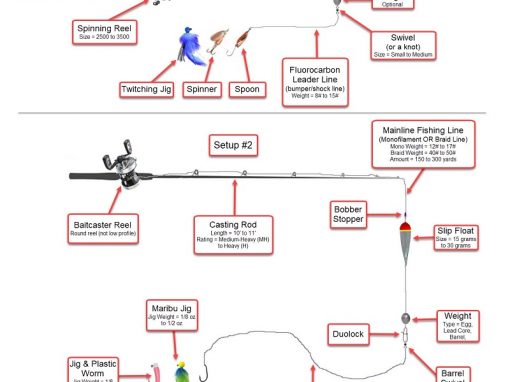
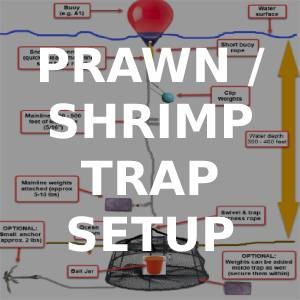





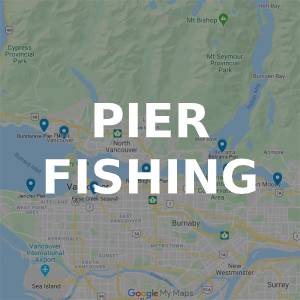

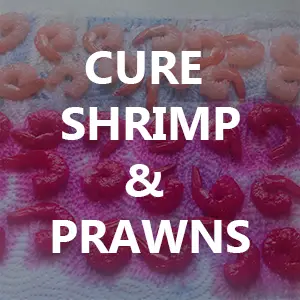
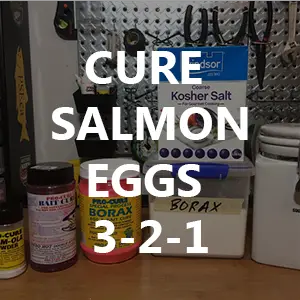

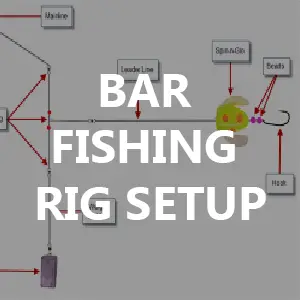
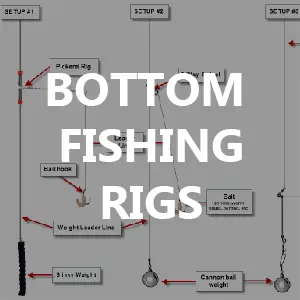


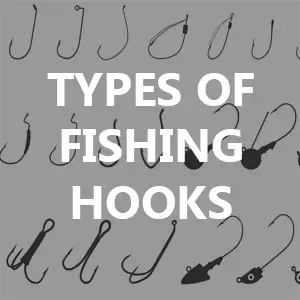

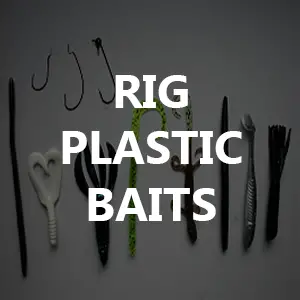

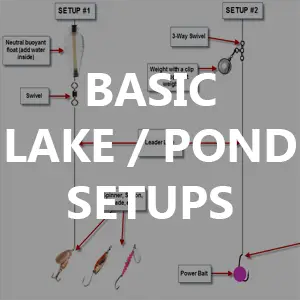
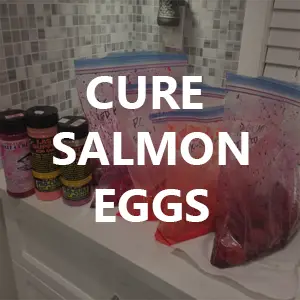






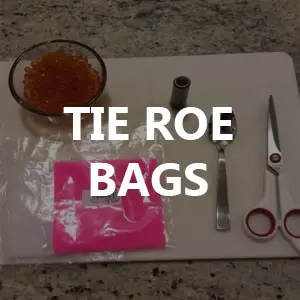

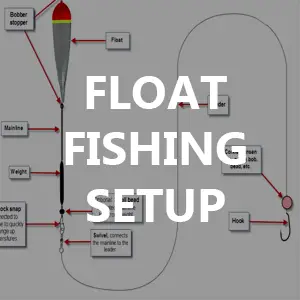
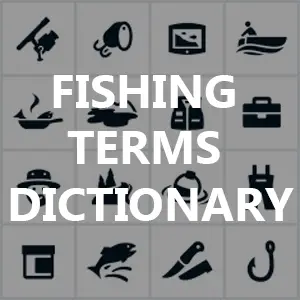


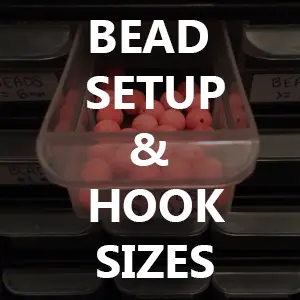


Step-by-Step Instructions on How to Cure Salmon Eggs
Layout Skeins on a paper towel. Also recommend putting newspaper or something else under the paper towel as blood/moisture will soak through.
Butterfly the Skeins on a paper towel. Cut the eggs down the middle with a knife or scissors. DO NOT cut through the skein or along the side of it. This opens up the skein so the cure can easily get into all the eggs. Finally, don’t worry about breaking or popping the eggs in this step; a few simple scissor clips will make it easy to separate the eggs and skein.
If the skein still has blood in its veins, use a spoon or butter knife to push the blood out. Dab it up with a paper towel. Lastly, use a paper towel to dab any blood anywhere else on the roe/skein. Repeat process for all skeins.
Cut the skeins into smaller pieces. Typically, I like to cut 1 skein into 3 or 4 pieces. I think smaller pieces cure better as there is more surface area for the cure to work. Also, smaller pieces make it easier to keep track of bait because you can just grab what you need when you’re ready to fish.
Put the small pieces into a large freezer Ziploc bag. On average I put 2 skeins per Ziploc bag, but keep in mind salmon skeins vary in size. For example, Chum vs. Pink skeins. In this video, I’m using large Chum skeins. IMPORTANT! I’d suggest using latex gloves before completing this step. A bit of a fail on my part here.
Put in your cure! Take the lid off and use about a third to a half of the bottle for each bag. I like this amount of cure when a large freezer Ziploc bag is 1/5-1/4 full of roe.
In addition to the cure powder, a light dusting of Krill powder has worked wonders for me! I’ve been using the Pro-Cure Krill powder and it’s definitely shown a difference.
With some air in the Ziploc bag tumble the cure. Do this until you’ve ensured all the eggs are well covered. I tumble every 15-20 minutes for the first 2 hours (6-8 tumbles). After the 2 hours I put into the fridge for the night. IMPORTANT! Do NOT drain the juice.
The entire curing process I recommend 36 to 48 hours. After the first night in the fridge, check on the eggs. They will feel like they are getting harder. Keep tossing them around and rubbing them gently into the juice. You really can’t tumble the eggs too much during the 48 hour period. You don’t have to do it as often in the last 24 hours of curing as you did in the first 12 to 24 hours. In this last period I’d recommend tumbling them at least 5-6 times.
Use a Sharpie to write the cure name & recipe on the bags. Write down the name of the cure and the recipe you use. This is especially important if you add Krill powder or other ingredients that work well in the river.
Once the eggs have been cured for 36 to 48 hours, you’ll need to decide if you want to freeze them. If you’re not using the eggs in the next week, you should freeze them. Be sure to freeze the eggs into bag sizes that would accommodate a fishing trip. That way you don’t have to thaw the entire batch, but only what you need.
There are a number of options in how to preserve your eggs:
- Store in a Jar
- Vacuum Seal
- Freezer Ziploc bags
Important: If you want to store something for a long time, I suggest the jar storage with some borax added. If you want to use the eggs in a few months, I suggest a vacuum seal (see below). If you need to use them in less than a month, you could use freezer Ziploc bags.
In the video I decided to freeze my eggs using my Food Saver freezer bags (vacuum sealed). This is one way to store your eggs, but it’s not the best. I like to try out different ways to store things all the time. Most often I use Mason jars with plain old Borax for my cured egg storage.
If you use a vacuum sealer, make sure to write down your recipes and cures on the new bags. This roe will be ready to fish in a few months, or even a year. Take the bag(s) out of the freezer and put them in the fridge the night before the fishing trip. When the morning comes they should be ready for action!.
Tip 1: If you use a vacuum sealer to store your eggs, you should strain any roe juice or liquid that is left over. If the roe in the sealed bags is too juicy, they’ll be more likely to freeze burn because liquid makes it easier for air to get in through the seal.
Tip 2: Always make sure to seal the top of the bag at least twice if you use a vacuum sealer on your eggs. This prevents any air leakage in the freezing process.
How I Cure Eggs for Steelhead & Salmon Bait – 4 EASY METHODS
FAQ
How long does salmon eggs bait last?
How do you wrap salmon eggs for bait?
How to cure and preserve eggs from salmon & trout for bait?
How to cure and preserve eggs from salmon or trout for bait. For the best bait possible cure and preserve only the best salmon and trout eggs. You are wasting your time if you did not properly store the eggs prior to the curing process. You should cure the salmon or trout eggs within 24 hours of catching the fish.
What are the benefits of smoked salmon over raw salmon?
It actually has the same characteristics as raw salmon, being relatively low in calories, it is an excellent source of protein, good fat and several vitamins and minerals. The smoking process just adds an aroma.
Do you need salmon eggs for bait?
You don’t need Salmon eggs specifically, you can also cure Steelhead and Trout eggs. But often Chinook, Coho, Sockeye, Pink and Chum Salmon eggs are the most popular eggs for bait. In this video, Cameron Black explains the processes, best practices and what not to do on egg curing.
How do you cure salmon eggs?
Step 1: You will need a two large plastic bowls, a plastic spoon, eggs, paper towels, a plastic paint strainer, and a quality salmon egg cure. Step 2: Drain all fluid from the eggs. If there is any trace of blood, rinse the eggs with distilled or river water. Do not use tap water. Step 3: Trout Eggs ready for curing.
